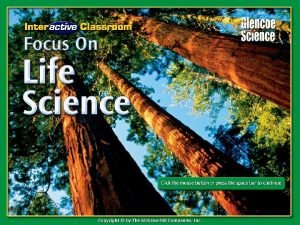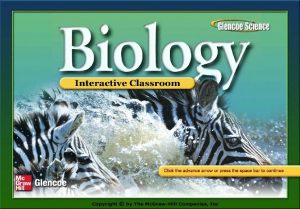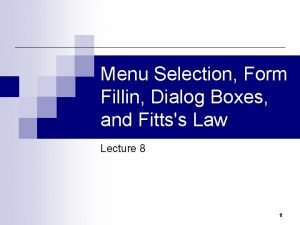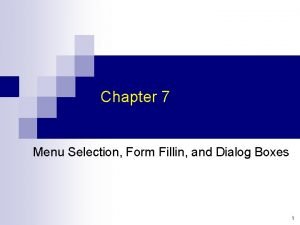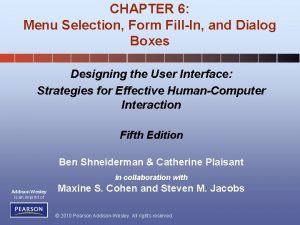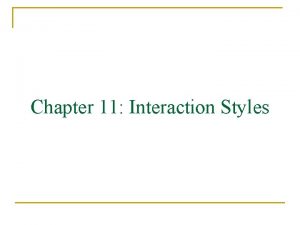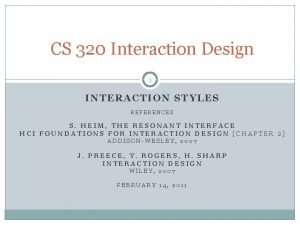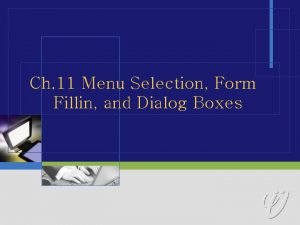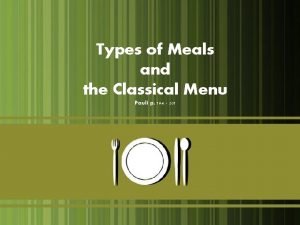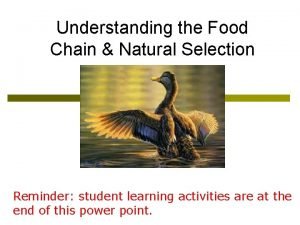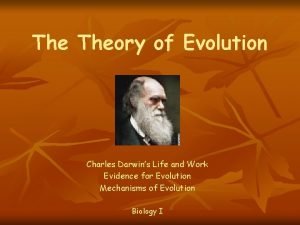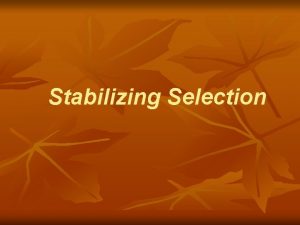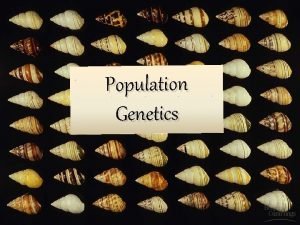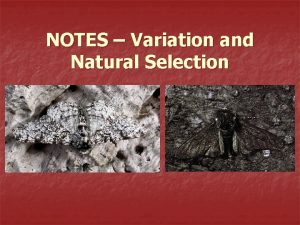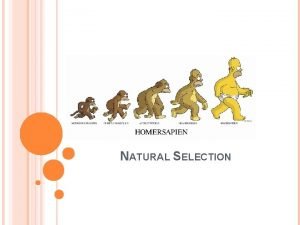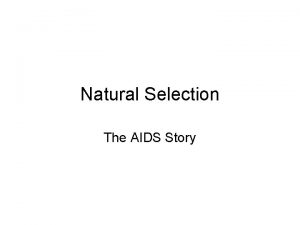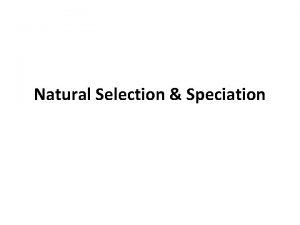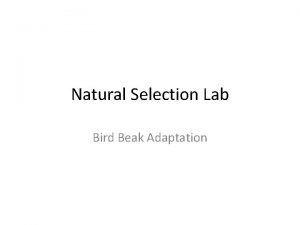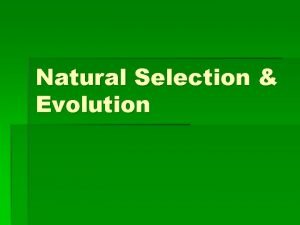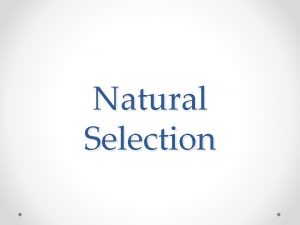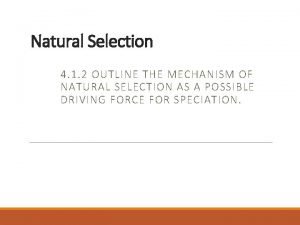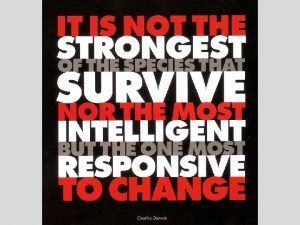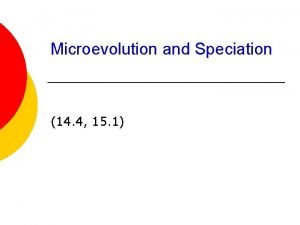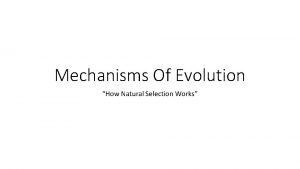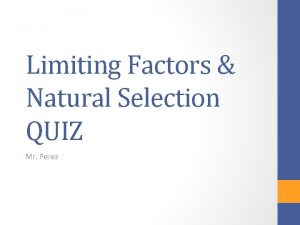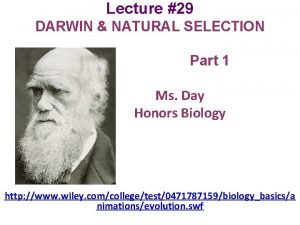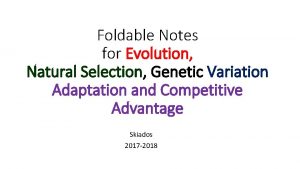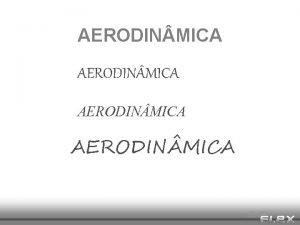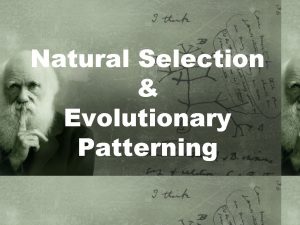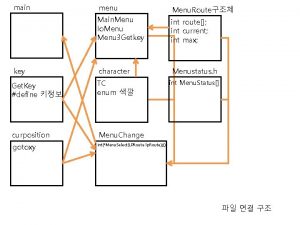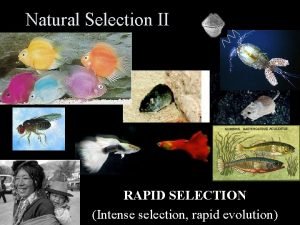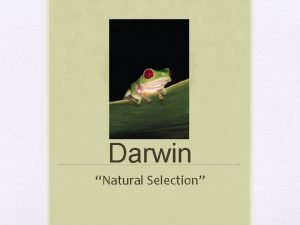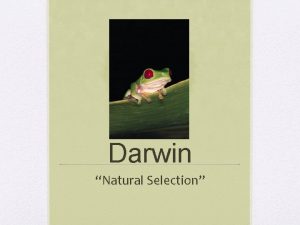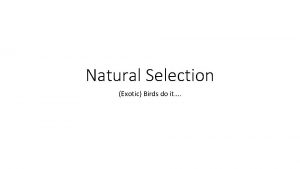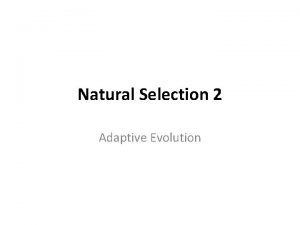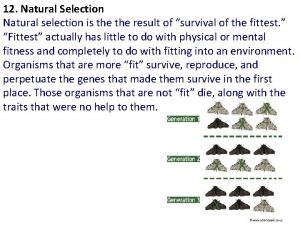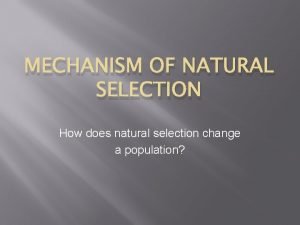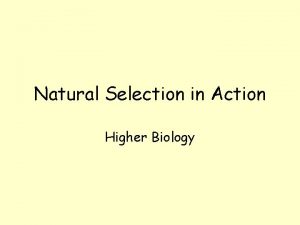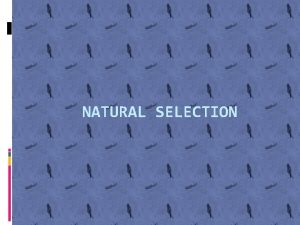Chapter Menu Lesson 1 Natural Selection Lesson 2











































- Slides: 43


Chapter Menu Lesson 1: Natural Selection Lesson 2: Adaptation and Extinction Click on a hyperlink to view the corresponding lesson.

5. 1 Natural Selection evolution naturalist natural selection adaptation

5. 1 Natural Selection Charles Darwin • Evolution is change over time. • The naturalist Charles Darwin was the first person to write a thorough collection of evidence supporting evolution. • Darwin’s theory serves as the basis of all biological research today.

5. 1 Natural Selection Charles Darwin (cont. ) • Darwin explored South America and its remote islands, such as the Galapagos, on the HMS Beagle.

5. 1 Natural Selection Darwin’s Observations • Darwin made observations about the diversity and uniqueness of organisms. – Many of the animals on the Galapagos were similar, but not the same as organisms in mainland South America. – Darwin reasoned that perhaps the organisms in the Galapagos originally came from South America and over time, they had evolved.

5. 1 Natural Selection Tortoises • Darwin found giant tortoises on all the Galapagos Islands, but nowhere else. • He reasoned that each new population changed slightly, or evolved, to fit its unique environment on the island.

5. 1 Natural Selection Finches • Darwin was impressed by the diversity of finches on the Galapagos. – Darwin explained that if individuals from a species were separated, future generations might look and behave differently. – The finches became different because they became suited to the different habitats on the islands.

5. 1 Natural Selection Selective Breeding • Selective breeding is breeding plants and animals to get offspring with desired characteristics. • This does not lead to a new species— the organism can still breed with other members of its species.

5. 1 Natural Selection Darwin’s Theory of Natural Selection • Organisms with traits that allowed them to survive under particular environmental conditions produced more offspring. • Eventually those traits would be common in the species. How can natural selection be modeled?

5. 1 Natural Selection Genetic Variation • Sometimes changes occur in genes and a new trait is created. • If the trait is beneficial, the organism may survive and pass the trait on to the next generation. • Genetic variation is necessary for evolution to occur.

5. 1 Natural Selection Population Growth and Struggle to Survive • Although resources are limited, animals often produce more offspring than could survive. • Darwin decided this was a natural process that selected which organism survived, and called it natural selection. • Adaptation refers to traits that increase the likelihood of surviving and reproducing in a particular environment.

5. 1 Natural Selection • Four steps or requirements of Darwin’s theory of evolution by natural selection: – Step 1: Overproduction – Step 2: Relative similarity – Step 3: Inherited variation – Step 4: Natural selection

5. 1 Natural Selection (cont. ) Overproduction Inherited Variation Natural Selection

5. 1 Natural Selection 1. 2. 3. 4. A B C D What did Darwin observe about the tortoises and finches in the Galapagos? A their large size B their similarity to those on the mainland C their adaptations to their environments D their friendliness

5. 1 Natural Selection 1. 2. 3. 4. A B C D What is necessary for evolution to occur? A selective breeding B genetic variation C populations isolated on islands D none of the above

5. 1 Natural Selection 1. 2. 3. 4. A B C D What is not a main source of genetic variation? A differences in diet B sexual reproduction C mutations D gamete formation


5. 2 Adaptation and Extinction structural adaptation camouflage mimicry behavioral adaptation extinct

5. 2 Adaptation and Extinction Adaptations • Humans can change their environment to meet their needs. • Organisms have evolved adaptations to their environment by the process of natural selection.

5. 2 Adaptation and Extinction Understanding Adaptations • Adaptations are inherited traits that increase an organism’s chance of surviving and reproducing in a particular environment. – Adaptations are the final products of the long process of natural selection. – Adaptations are naturally selected for, not intentional. – Not all traits are adaptations.

5. 2 Adaptation and Extinction Types of Adaptations • Structural adaptations are aspects of the physical body that help organisms survive and reproduce. • Camouflage—coloring that blends with the environment—makes organisms difficult to see.

5. 2 Adaptation and Extinction Types of Adaptations (cont. ) • Mimicry is when one species (the mimic) looks like another species (the model) in order to deceive a third species. • Behavioral adaptations are actions or behaviors that help organisms survive and reproduce.

5. 2 Adaptation and Extinction • A species becomes extinct when all the individuals of a particular species die off. • There have been several major extinction events in history.

5. 2 Adaptation and Extinction Causes of Extinction • Loss of habitat • Loss of genetic diversity • Competition with exotic species • Inability to adapt Causes of Slow Extinction

5. 2 Adaptation and Extinction 1. 2. 3. 4. A B C D What is not an example of an adaptation? A inbreeding B camouflage C mimicry D behavior

5. 2 Adaptation and Extinction 1. 2. 3. 4. A B C D Why do some non-desirable traits remain in a population? A selective breeding B mutation C they are genetically linked to more beneficial traits D they may be useful in the future

5. 2 Adaptation and Extinction 1. 2. 3. 4. A B C D What cause for extinction would most likely be involved in rapid environmental changes such as climate change? A loss of habitat B inability to adapt C loss of genetic diversity D competition with exotic species


Chapter Resources Menu Chapter Assessment California Standards Practice Image Bank Science Online Interactive Table Virtual Lab Click on a hyperlink to view the corresponding feature.

1. 2. 3. 4. A B C D What is evolution? A adaptations to particular environments B genetic change in a population over time C natural selection D differences in traits

1. 2. 3. 4. A B C D What is necessary for natural selection to occur? A genetic variation B constant environmental conditions C isolate populations D shortage of offspring

1. 2. 3. 4. A B C D Which of the following is NOT one of the main sources of genetic variation in a population? A mutations B learned abilities C formation of gametes D sexual reproduction

1. 2. 3. 4. A B C D Which of the causes of extinction is not influenced by human actions? A inability to adapt B loss of genetic diversity C loss of habitat D competition with exotic species

1. 2. 3. 4. A B C D Why do desert rabbits have mottled fur? A behavioral adaptations B mimicry C camouflage D incomplete dominance

SCI 3. a 1. 2. 3. 4. A B C D What causes evolution? A genetic variation B environmental factors C both D neither

SCI 3. e 1. 2. 3. 4. A B C D What is one reason exotic species can sometimes outcompete native species? A they have no natural predators B there are more of them C the new environment is more favorable D the natives are not adapted

SCI 3. e 1. 2. 3. 4. A B C D When do we designate a species as threatened or endangered? A when there is one population left B when the number of individuals falls below a certain level C when population numbers are declining D when genetic variation is low

SCI 3. a 1. 2. 3. 4. A B C D Which is required for natural selection to occur? A inherited variation B overproduction of offspring C genetic variation D all of the above

SCI 3. b 1. 2. 3. 4. A B C D Which of the following did not contribute to Darwin’s development of theory of natural selection? A overproduction of offspring B competition with exotic species in the Galapagos C an essay on human population growth D similarities and differences of species in the Galapagos

Image Bank

Interactive Table Causes of Slow Extinction

 Artificial selection vs natural selection
Artificial selection vs natural selection Natural selection vs artificial selection
Natural selection vs artificial selection Difference between continuous and discontinuous variation
Difference between continuous and discontinuous variation Natural selection vs artificial selection
Natural selection vs artificial selection Natural selection vs artificial selection
Natural selection vs artificial selection Natural selection menu
Natural selection menu Chapter 15 section 1 darwins theory of natural selection
Chapter 15 section 1 darwins theory of natural selection Balancing selection vs stabilizing selection
Balancing selection vs stabilizing selection K selected
K selected K selection r selection
K selection r selection Two way selection and multiway selection in c
Two way selection and multiway selection in c Two way selection and multiway selection in c
Two way selection and multiway selection in c Procedure of pure line selection
Procedure of pure line selection Menu selection form
Menu selection form Menu selection form
Menu selection form Menu selection form
Menu selection form Types of interaction styles
Types of interaction styles Menu selection interaction styles
Menu selection interaction styles Menu selection form
Menu selection form Menu selection form
Menu selection form Contoh siklus menu 5 hari
Contoh siklus menu 5 hari Ikon microsoft excel
Ikon microsoft excel Difference between classical menu and modern menu
Difference between classical menu and modern menu Sebutkan langkah memulai browsing
Sebutkan langkah memulai browsing Langkah menu
Langkah menu Sperm parts
Sperm parts 4 principles of natural selection
4 principles of natural selection Stabilizing natural selection definition
Stabilizing natural selection definition Genetic drift
Genetic drift Overproduction in natural selection
Overproduction in natural selection Natural selection
Natural selection Aids basketball player
Aids basketball player 3 types of natural selection
3 types of natural selection Bird beak adaptation lab
Bird beak adaptation lab 3 types of natural selection
3 types of natural selection The slow gradual change in a species is called
The slow gradual change in a species is called Natural selection in cats
Natural selection in cats Natural selection
Natural selection Ted ed evolution
Ted ed evolution Microevolution
Microevolution Mechanisms of evolutionary
Mechanisms of evolutionary What are the principles of natural selection
What are the principles of natural selection Lamarck’s theory of evolution.
Lamarck’s theory of evolution. Natural selection foldable
Natural selection foldable





